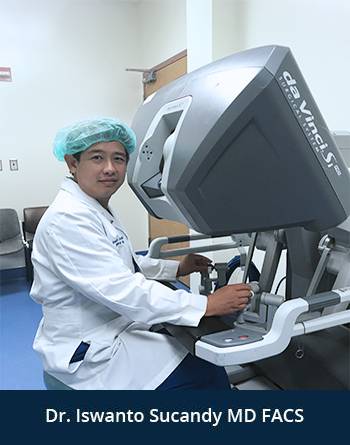Intrahepatic Cholangiocarcinoma
Learn about Dr. Sucandys Treatments of Intrahepatic Cholangiocarcinoma
 Intrahepatic cholangiocarcinoma is an aggressive cancer that originates from the bile duct branches within the liver. It is the 2nd most common primary liver cancer, comprising 5-15% of primary liver malignancies. Cholangiocarcinoma is mainly observed in adults with peek incidence between 60 and 80 years old.
Intrahepatic cholangiocarcinoma is an aggressive cancer that originates from the bile duct branches within the liver. It is the 2nd most common primary liver cancer, comprising 5-15% of primary liver malignancies. Cholangiocarcinoma is mainly observed in adults with peek incidence between 60 and 80 years old.
It has male to female ratio of 1.5 to 1. Risk factors include chronic biliary tract disease such as primary sclerosing cholangitis, presence of stone inside the liver (hepatolithiasis), choledochal cyst, and liver fluke infections commonly seen in Southeast Asia. Most patients, however presents without evidence of predisposing factors.
Symptoms depend on the location, growth types and stage. Intrahepatic cholangiocarcinoma tumors typically form masses with indistinct borders and are usually discovered at advanced stages. Jaundice or yellowing of the skin and eyes are symptoms of this disease at advanced stages.


The modern surgical treatment for an intrahepatic cholangiocarcinoma now also includes regional lymphadenectomy (resection of draining lymph nodes) , in addition to the standard liver resection. This is important for staging as well as treatment purposes.
A right-sided intrahepatic cholangiocarcinoma requires lymphadenectomy around the porta hepatis. A left-sided intrahepatic cholangiocarcinoma requires lymphadenectomy around the porta hepatis and around the stomach/ lower esophagus. After the operation, systemic chemotherapy may be added in order to achieve improved and long overall survival.
Dr. Iswanto Sucandy routinely performs this operation using robotic liver resection and robotic lymphadenectomy techniques. It is very important to see an experienced liver surgeon in your area to achieve an optimal oncologic resection, which in turn predicts overall survival. A close follow-up with serial CT scans every 4-6 months for at least 5 years is necessary to detect potential tumor recurrence.


